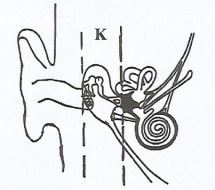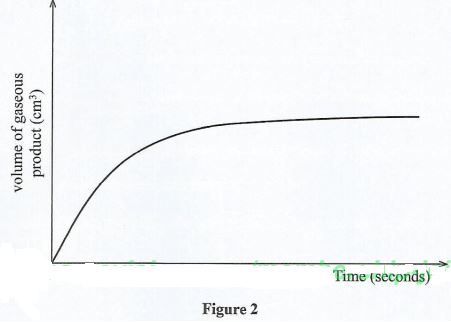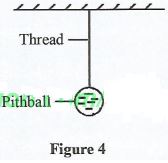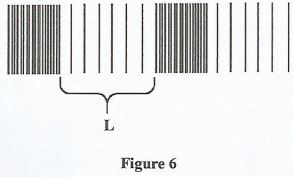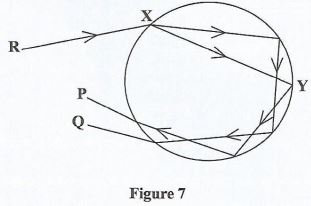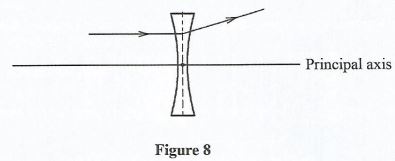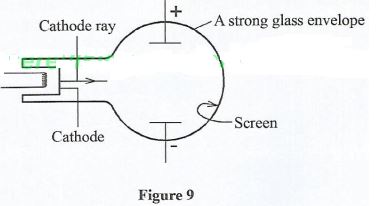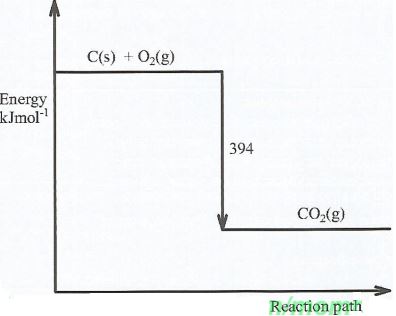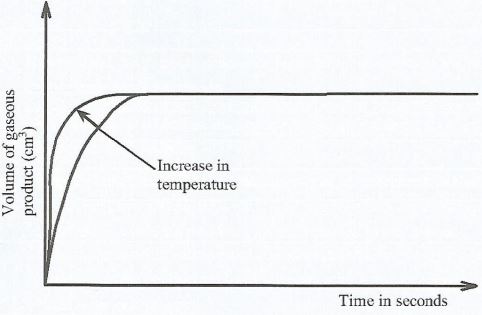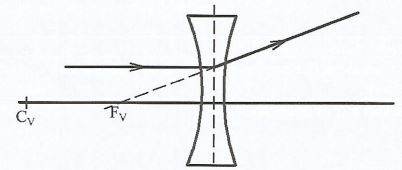SECTION A: BIOLOGY (34 marks)
Answer all the questions in this section in the spaces provided.
-
- Define each of the following terms as used in ecology:
- Food chain (1 mark)
- Population (1 mark)
- State two biotic factors that influence distribution of organisms in an ecosystem. (2 marks)
- Define each of the following terms as used in ecology:
-
-
- What are saprophytes? (1 mark)
- Give an example of a saprophyte. (1 mark)
- State two functions of the urethra. (2 marks)
-
-
- Give two functions of the umbilical cord in humans. (2 marks)
- State two roles of progesterone hormone in the menstrual cycle. (2 marks)
-
- State two causes of seed dormancy.(2 marks)
- Explain how seed dormancy is broken. (2 marks)
-
- Name the hormone responsible for moulting in insects. (1 mark)
- State two benefits of variation in living organisms. (2 marks)
- Explain how sex is determined in humans.(4 marks)
- The diagram below represents the human ear with one of its sections labelled K.
- Explain how K is adapted to its functions. (3 marks)
- Name one defect of the human ear (1 mark)
- Explain how the fovea centralis is adapted for its function in the human eye. (2 marks)
- Why are acquired characteristics not inherited? (2 marks)
- Explain the importance of movement in animals. (3 marks)
SECTION B: CHEMISTRY (33 marks)
Answer all the questions in this section in the spaces provided.
- State Boyle's Law. (1 mark)
- Name one apparatus that is accurately used for the preparation of standard solution in the laboratory. (1 mark)
-
- What is meant by the term exothermic reaction? (1 mark)
- Carbon burns in oxygen to form carbon(IV) oxide producing 394 kJmol−1 of heat. Represent this information on an energy level diagram. (2 marks)
- Give two advantages of using biogas instead of charcoal for domestic purposes. (2 marks)
-
- Name the chief ore of aluminium metal. (1 mark)
- During the extraction of aluminium, mud and chemical impurities are removed.
- Name two major chemical impurities that are removed. (2 marks)
- Explain how one of the impurities named in 15(b)(i) is removed. (1 mark)
- Give two uses of aluminium metal. (2 marks)
- The volume of 3.0g of gas A is 300cm3 at 140KPa. Calculate its volume, when its pressure is halved at the same temperature. (3 marks)
- Figure 1 shows structures of detergents. Use it to answer the questions that follow.
- Name detergent:
X (1 mark)
Y (1 mark) - Give one advantage of detergent X.
- Name detergent:
- Combustion, in which a flame is produced is described as burning. State three necessary conditions for burning to take place. (2 marks)
-
- Explain how an increase in concentration of substances affects the rate of a reaction. (2 marks)
- Using the following graph given in Figure 2, sketch a curve which will represent an increase in temperature on a reaction. (2 marks)
- Study the flow chart in Figure 3 and use it to answer the questions that follow.
- Name the process by which nitrogen and oxygen are obtained from air. (1 mark)
- Name the catalyst used in the Haber process. (1 mark)
- Identify substance E. (1 mark)
- Write the chemical equation for the reaction that produces substance E. (1 mark)
- Polymers can be classified as natural or synthetic.
- Name one:
- synthetic polymer (1 mark)
- natural polymer (1 mark)
- State two advantages of synthetic polymers over natural polymers. (2 marks)
- Name one:
SECTION C: PHYSICS (33 marks)
Answer all the questions in this section in the spaces provided.
- An object is placed at the centre of curvature of a convex mirror. State two characteristics of the image formed. (2 marks)
- Figure 4 shows a negatively charged pithball suspended by a thread.
State and explain what happens to the pithball when a negatively charged rod is brought close to it. (2 marks) -
- Draw a circuit symbol of a galvanometer. (1 mark)
- Explain how polarisation affects a simple cell. (3 marks)
- Figure 5 shows three bar magnets and a pin.
Identify the poles marked X and Y. (2 marks) -
- State the difference between progressive waves and stationary waves in terms of energy transmission. (2 marks)
- Figure 6 shows wave fronts obtained when energy is transmitted through a slinky spring.
Identify the part labelled L. (1 mark)
- Explain why sound travels faster in wood than in air. (2 marks)
-
- State the SI unit of potential difference. (1 mark)
- State two factors that affect the heat produced by an electric current in a heater coil. (2 marks)
- Figure 7 shows a ray of white light R, entering a rain drop and emerges as ray P and Q.
- State the property of light demonstrated at points X and Y. (2 marks)
- Identify the colour ray Q. (1 marks)
- Figure 8 shows how a ray of light parallel to the principal axis behaves after passing through a concave lens.
- Complete the ray diagram to locate the principal focus (F) of the lens. (2 marks)
- On the same diagram, locate and mark the centre of curvature C, of the lens. (1 mark)
- State the function of a fuse in a domestic wiring system. (1 mark)
- Figure 9 shows a diagram of a cathode ray tube.
- Complete the path of the cathode ray as it moves until it reaches the screen. (1 mark)
- State the reason why the tube is made of a strong glass envelope. (1 mark)
- Describe how x-rays are produced in an x-ray tube (2marks)
- Figure 10 shows part of a GM-tube and a radioactive source placed in front of it.
Describe what happems in the tube when radiations enters the tube through the mica windoe (2marks) - State the difference between insulators and conductors in terms of conduction band and valence band. (2 marks)
MARKING SCHEME
| SECTION A: BIOLOGY (34 marks) | ||
| 1 |
|
(1 mark)
|
| 2 |
|
(2 marks)
(2 marks) |
| 3 |
|
(2 marks)
|
| 4 |
|
(2 marks)
|
| 5 |
|
(3 marks) |
| 6 |
|
(4 marks)
|
| 7 |
|
(3 marks)
(1 mark) |
| 8 | It has a high concentration of cones, which leads to a higher visual acuity/colour perception; | (2 marks) |
| 9 | Acquired characteristics are not in the genes; only characteristics whose information is in the genes can be inherited. 2 marks | (2 marks) |
| 10 |
|
(3 marks) |
| 11 | The volume of a fixed mass of gas is inversely proportional to its pressure at constant temperature. | (1 mark) |
| 12 | Volumetric flask | (1 mark) |
| 13 |
|
(1 mark)
(2 marks)
|
| 14 |
|
(2 mark) |
| 15 |
|
(2 mark)
(3 mark)
(1 mark)
(2 marks) |
| 16 | P1V1 = P2V2 V2 = P1V1 P2 V2 = 140×300 70 = 600cm3 |
(3 marks) |
| 17 |
|
(2 marks)
|
| 18 |
|
(1 marks) |
| 19 |
|
(2 marks) |
| 20 |
|
(1 mark) (1 mark) (1 mark) (1 mark) |
| 21 |
|
(1 mark)
|
| 22 | No image is formed | (2 marks) |
| 23 | They repel since like charges repel. | (2 marks) |
| 24 |
|
(1 mark)
(3 marks) |
| 25 |
|
(2 marks) |
| 26 |
|
(2 marks) |
| 27 | Wood particles are closer than air hence transact sound faster. | (2 marks) |
| 28 |
|
(1 mark)
(2 marks) |
| 29 |
|
(2 marks)
(1 mark) |
| 30 |
(2 marks)
|
|
| 31 | Protect the user/appliance | (1 mark) |
| 32 |
|
(1 mark)
(1 mark) |
| 33 | X-rays are produced when fast moving electrons are suddenly stopped by a metal target in the x-ray tube. | (2 marks) |
| 34 | When radiations enter the tube, the argon gas is ionized producing both negative and positive ions. The negative ions are attracted to the anode while the positive ions are attracted to the cathode. | (2 marks) |
| 35 | In conductors the valence and conduction band overflows while in insulators the conduction band is empty with a full valence band and large energy gap. | (2marks) |
Download General Science Paper 2 Questions and Answers - KCSE 2021 Past Papers.
Tap Here to Download for 50/-
Get on WhatsApp for 50/-
Why download?
- ✔ To read offline at any time.
- ✔ To Print at your convenience
- ✔ Share Easily with Friends / Students

